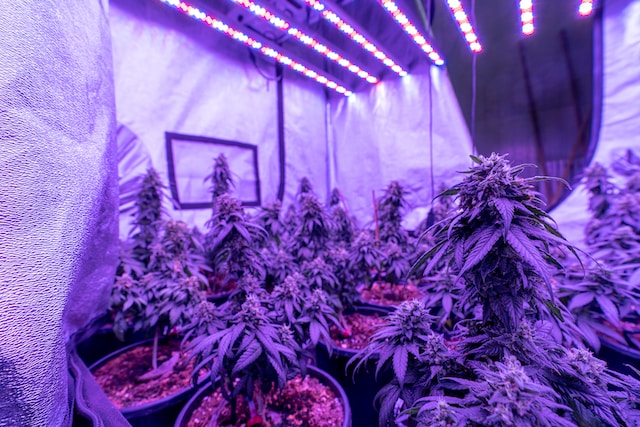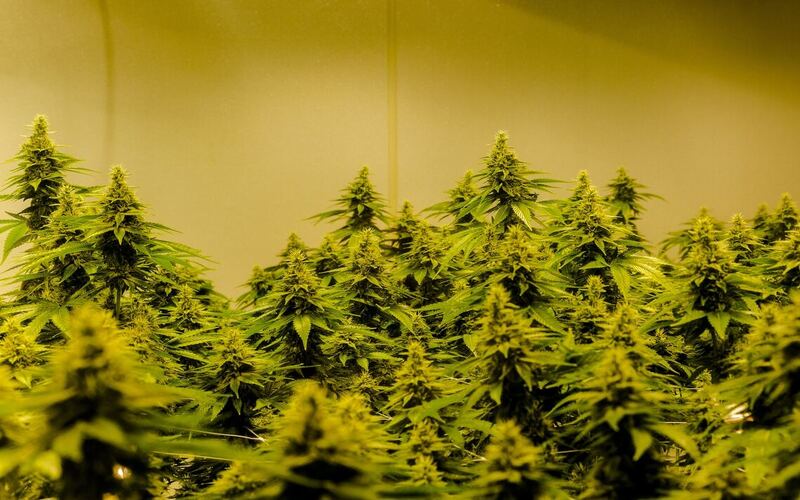Reduced energy consumption provides the quickest path to a smaller carbon footprint. Cannabis marketers have done an excellent job creating the illusion that growing cannabis equates to being environmentally friendly, but the truth is that many environmental practices of the “green” industry are not really so green.
As the industry has grown, it has come under increasing criticism for its energy consumption, water use, industrial pollution, and consumer packaging waste.
At the top of this list is energy use, which has emerged as the industry’s biggest environmental concern. In an indoor cannabis cultivation facility, fans and lights sometimes need to be working 24 hours a day, seven days a week to ensure a quality crop.
Now, take into account that about 40% of growers in the United States grow solely indoors and 60% choose a hybrid indoor/outdoor system and it is no wonder that a 2012 report on the carbon footprint of indoor cannabis production found that 1% of the nation’s energy consumption can be attributed to these operations.
In the highest cannabis-producing state of California, that figure rises to 3% of the nation’s overall energy consumption.
An issue that can no longer be ignored, the industry’s energy consumption makes it clear that better sustainability practices must be implemented.
As a heat wave swept over the state of California last summer, Gov. Gavin Newsom declared a state of emergency, saying that major efforts to curb energy usage had to be taken to avoid a disruption in the state’s energy grid.
A spotlight was then put on the industry as the real damages these facilities were contributing to the state’s power grids were being revealed.
As part of its emergency measures, California created a $150 million fund to help relieve grid pressure by incentivizing businesses to reduce their energy use.
Through this fund, cannabis cultivators are encouraged to switch from conventional lighting fixtures to improved LEDs, for which they can receive up to $500 per fixture that is replaced with energy-efficient technology.
This rebate opportunity points to an obvious and immediate energy solution – switch to LED fixtures to save energy. California’s program and others like it across the country make what was once an expensive change more financially accessible through utility-based rebates that help offset the cost of most fixtures.
Rebates can help reduce or in some cases nearly eliminate the initial investment required for new LED lights, and once installed they provide a number of cost-saving benefits:
- Save energy, fast – Before operators even see the first installation bill, they will notice a big difference in how their operation is running. Since LED fixtures emit less heat as opposed to conventional HPS fixtures, a facility’s HVAC system does not have to work in overdrive to offset the temperature difference. This change is not only beneficial for the plants, but for the life of the entire lighting set-up. The higher heat produced by HPS fixtures tend to cause issues within the fixture and can ultimately damage the whole system.
- Boost crop yields, overall production – According to one study, LEDs allow for near total control by optimizing periodicity, quantity and the spectrum of light. Now, growers are able to directly maximize the chemical reactions within the plant like never before. Furthermore, since LED fixtures do not emit as much heat as an HPS fixture, they can be mounted much closer to the canopy, increasing cannabinoid yields.
- Contribute to the bigger picture – Switching to LEDs not only saves money, but reducing an operation’s carbon footprint demonstrates a commitment to a cleaner environment driven by better business practices.
As the industry shifts to correct years of neglected sustainability policies, LED lighting has become a leading solution in the “green” cannabis movement.

Unlike other resources such as water and gas, energy use can be quickly managed. Water consumption is much more difficult to reduce and control, and HVAC systems that reduce pollutants are costly and difficult to install without messing with production for an extended period.
LEDs have become the go-to for operators seeking to reduce their carbon footprint. To date, 69% of cultivators have made the switch.
Although the benefits of switching to LEDs seem obvious, hesitation persists among a small percentage of growers.
The best LED manufacturers and retailers provide resources and information to help educate cultivators with everything from setup and installation requirements to even providing assistance when applying for state rebate opportunities.
Once operators fully understand how an LED lighting system can improve an overall operation, initial hesitations tend to dissipate. It isn’t long before most cultivators recognize that the benefits go well beyond energy costs and usage.
Author
-
Mike MacKinnon is CEO of Spectrum King LED, which created the first LED lighting for cannabis cultivation in 2015. For more information on how LED lighting impacts energy use, visit Spectrum King LED.







